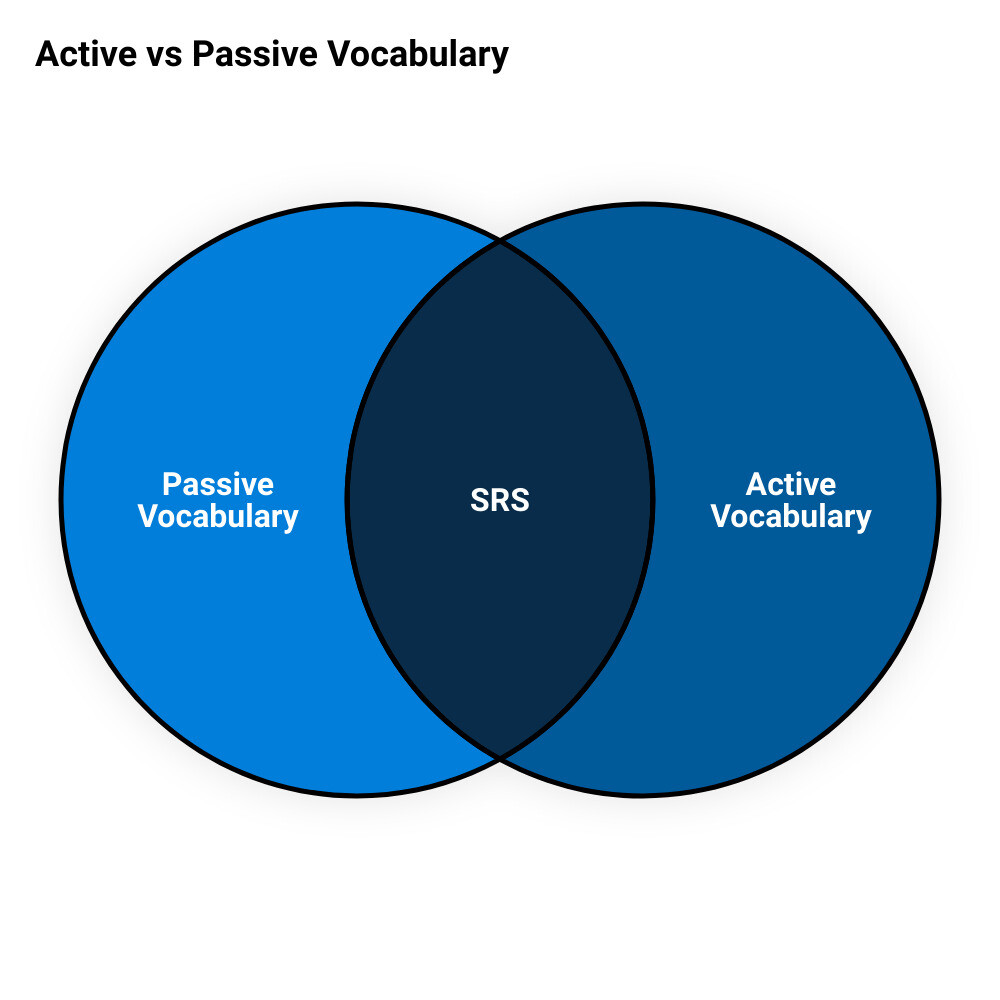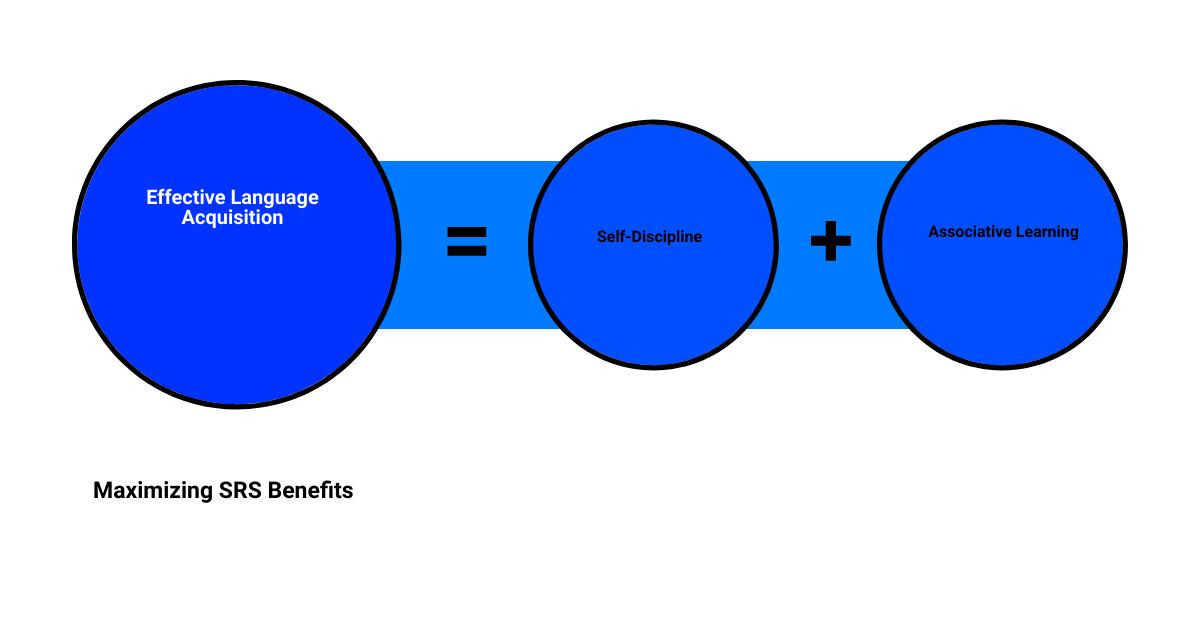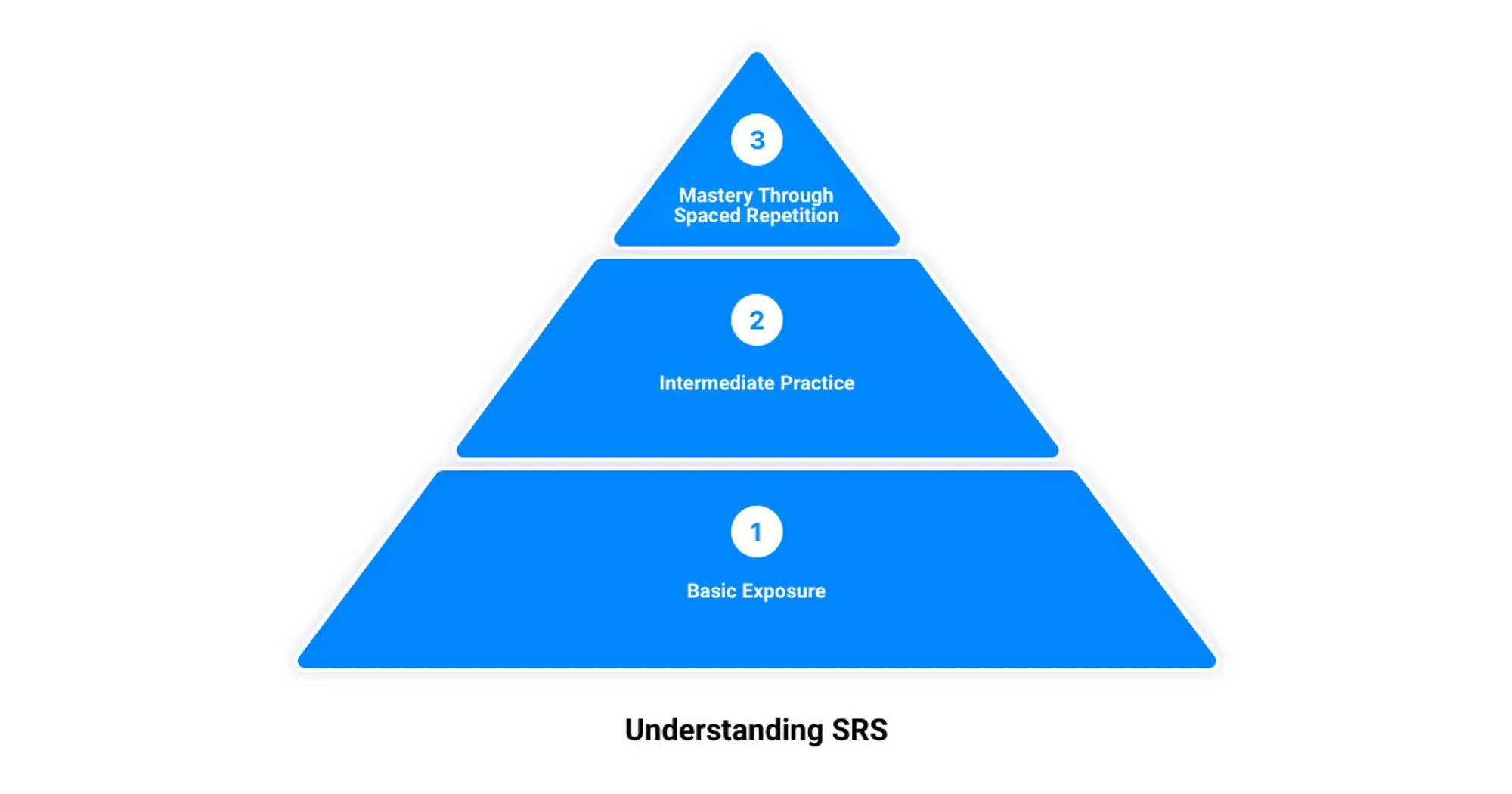Unlock the full potential of your brain's learning capacity with the game-changing technique of Spaced Repetition System (SRS) for language learning. If you've been on the hunt for a smarter, more efficient, and evidence-backed approach to acquiring a new language, you've hit the jackpot. For lifelong learners, especially those trying to master Mandarin, this technique can be a game-changer.
Spaced Repetition System for language learning is not a new concept, yet many language learners are unaware of its power. The method strategically spaces out your study sessions to optimize long-term memory retention. Instead of cramming information, this technique enables you to absorb knowledge in smaller, manageable chunks revisited at gradually increasing intervals. It's essentially feeding your brain the right amount of information at the right time.
This introduction will guide you through the benefits of the Spaced Repetition System in language learning, particularly in mastering Mandarin, including Chinese characters. We'll delve into the cognitive science behind this effective learning strategy, how it works for language learning, and its role in sustainable vocabulary building.
Furthermore, we'll explore how popular language learning platforms, including Babbel, Anki, FluentU, and Traverse, have implemented this technique. We'll specifically focus on how Traverse partners with Mandarin Blueprint for effective Mandarin learning and how it combines mind mapping, SRS flashcards, and connected note-taking to enhance the learning experience.
Finally, we will provide practical tips on how to maximize the benefits of SRS in language learning, emphasizing the importance of self-discipline, combining SRS with other language learning strategies, and creating associations and example sentences when using SRS.
Get ready to accelerate your language learning with the Spaced Repetition System and transform your study sessions into a more effective, enjoyable, and fruitful experience.
Understanding Spaced Repetition System (SRS) for Language Learning
Immersing yourself in a new language is an exciting adventure. But, as any lifelong learner knows, the journey is not without its challenges. One of the most significant is memorizing and retaining the vast amount of vocabulary and grammar rules. Enter the Spaced Repetition System (SRS), a scientifically-backed learning technique that promises to revolutionize your language learning process.
The Science Behind Spaced Repetition System
SRS is grounded in cognitive science, specifically leveraging the Spacing Effect theory, which suggests that our brains are more likely to retain information when reviewed several times over an extended period. This approach combats the "forgetting curve," an exponential decay in memory retention after initially learning new information. The idea is simple: instead of cramming, you review information just before you're about to forget it, thus ensuring constant reinforcement and embedding the information in your long-term memory.
How SRS Works for Language Learning
In the context of language learning, the Spaced Repetition System proves to be an efficient tool for vocabulary acquisition and grammar rule retention. The SRS organizes your study materials into electronic decks that appear on-screen sequentially. Each time you review a piece of information, your performance dictates when you'll see it again.
If you remember the information easily, the system increases the time before your next review. Conversely, if you struggle to recall a word or a grammar rule, the system schedules more frequent reviews until you've mastered it. This dynamic method adjusts based on your unique learning pace and pattern, making it a personalized, dynamic study method designed for maximum efficiency and effectiveness.
Whether you're diving into the intricate world of Mandarin, with its vast array of characters and tonal nuances, or exploring another language, SRS can serve as a powerful ally in your language learning journey. It's like having a smart flashcard system that knows your forgetting curve and tailors review sessions to your needs.
So, as you continue to invest in your language learning adventure, consider incorporating the Spaced Repetition System into your strategy. The science-backed method promises to enhance your retention, boost your vocabulary, and ultimately speed up your progress. The result? You'll be conversing confidently in your target language sooner than you might think.

The Role of Spaced Repetition in Sustainable Vocabulary Building
As you embark on your language learning journey, one key cornerstone is building a robust and sustainable vocabulary. Be it Mandarin Chinese or any other language, having a solid vocabulary is the bedrock upon which all other language skills are built. However, to truly master a language, it's not just about memorizing a laundry list of words. It's about being able to actively use them in conversation. Let's dive into how spaced repetition assists in this process.
Active vs Passive Vocabulary: The Importance of Both in Language Learning
In the realm of language learning, we often hear about two types of vocabulary: active and passive. Passive vocabulary refers to words that you recognize and understand when you read or hear them. On the other hand, active vocabulary includes words that you can confidently use in your speech or writing. Both are crucial for language proficiency, but it's the active vocabulary that often sets the stage for fluent communication.
While passive vocabulary allows you to understand others, active vocabulary is what allows you to express your thoughts, make statements, ask questions, and engage in meaningful conversation. To put it simply, passive vocabulary is about receiving information, while active vocabulary is about transmitting it.
How Spaced Repetition Helps in Building Active Vocabulary
Now, you may wonder, how does spaced repetition fit into this vocabulary building process? Here's the game-changing part. Spaced repetition doesn't just help you memorize new words—it transforms passive vocabulary into an active one.
Using spaced repetition, you're not only repeatedly exposed to new words, but you also review them at specific intervals, just before you're likely to forget them. This method, grounded in the psychological spacing effect, ensures information is better retained when reviewed at spaced intervals rather than in rapid succession.
The magic happens when you combine this with active recall, a technique that involves retrieving information from your memory. Imagine revisiting a word you learned using a flashcard, and instead of just passively re-reading it, you actively try to recall its meaning. This process strengthens your memory retention, enhancing your ability to recall the information in the future.
The result? The words you learn with spaced repetition not only fill your passive vocabulary but also build your active vocabulary. Over time, this repeated exposure and active recall turn passive recognition into active recall, allowing you to use the words confidently in conversation. In essence, spaced repetition transforms the intimidating task of vocabulary building into a manageable and sustainable one, setting you up for success in mastering your target language.
The Use of Spaced Repetition in Popular Language Learning Platforms
With the digital revolution, several language learning platforms have incorporated the concept of spaced repetition into their teaching methods. Here's a look at how some of the popular platforms are utilizing this powerful learning technique.
Babbel's Use of Spaced Repetition in Vocabulary Learning
Babbel, a widely recognized name in the language learning sphere, has designed its Review feature based on the proven method of spaced repetition. This feature is used via Stages in the Babbel platform. Depending on which stage you're at with a piece of vocabulary, you'll see an item more or less often. This use of spaced repetition in Babbel's platform ensures that the vocabulary you're learning is not just passing through your short-term memory, but gradually becoming part of your long-term recall.
Anki: A Popular SRS Application for Language Learning
On the other hand, Anki, a popular Spaced Repetition Software (SRS) application, has gained significant traction among learners, especially medical students for its high degree of customizability. With Anki, you can create your own flashcards, set your own spaced repetition schedule, and tailor the content according to your needs. This immense flexibility allows learners to leverage the spaced repetition technique in a way that best suits their learning style and goals. However, be aware of its steep learning curve and somewhat outdated interface, which may require some getting used to.
FluentU: Combining Videos with SRS for Interactive Language Learning
Finally, FluentU takes a slightly different approach by combining videos with SRS for an immersive and interactive language learning experience. FluentU turns real-world videos—like music videos, movie trailers, news, and inspiring talks—into personalized language learning lessons. As you go through the videos, FluentU uses spaced repetition to ensure that the vocabulary and phrases you're learning are firmly embedded in your memory. This combination of visual learning with the powerful technique of spaced repetition makes language learning both engaging and effective.
In conclusion, these popular platforms demonstrate how versatile the concept of spaced repetition is and how it can be adapted to different learning styles and environments. The key is to choose a platform that aligns with your learning needs, preferences, and pace.
Traverse: A Game-Changer in Language Learning with Spaced Repetition
Ready to turbocharge your Mandarin learning? Enter Traverse. Unlike any other platform, Traverse leverages the power of the Spaced Repetition System (SRS), mind mapping, and connected note-taking to revolutionize your language learning experience.
Traverse's Unique Combination of Mind Mapping, SRS Flashcards, and Connected Note-Taking
Traverse isn't just about SRS flashcards. It's a comprehensive learning ecosystem that goes beyond traditional learning methods. The platform leverages mind mapping, a potent technique that lets you group related topics, create links, and utilize color-coding for easy visual identification. This feature is particularly handy for learning complex topics like Mandarin characters, allowing you to understand the big picture and the intricate connections between different concepts.
The heart of Traverse, however, lies in its SRS flashcards. Built on the principle of active recall and spaced repetition, these customizable flashcards streamline your study process, allowing you to focus on what's important. You can even create fill-in-the-blank flashcards directly from your notes, adding another layer of personalization to your learning journey.
Last but not least, Traverse also offers advanced note-taking capabilities. From quick linking to other notes, creating sketches, embedding videos, to equation writing using Latex, you have a myriad of tools at your disposal to capture and organize knowledge in a way that makes sense to you.
How Traverse Partners with Mandarin Blueprint for Effective Mandarin Learning
To further supercharge your Mandarin learning, Traverse has formed a strategic alliance with Mandarin Blueprint, a platform renowned for its innovative approach to learning Mandarin Chinese. This partnership integrates the strengths of both platforms, creating a powerhouse for Mandarin learners.
Mandarin Blueprint's proven techniques, combined with Traverse's advanced SRS, mind mapping, and note-taking features, provide an immersive learning experience that goes beyond mere vocabulary. You'll get to explore visual mnemonics, mind mapping, and SRS flashcards, all in one place.
Importing Anki Decks into Traverse for Continued Learning
Already invested time and effort in creating Anki decks? No problem. Traverse is the first 100% Anki-compatible learning app, allowing you to import your Anki decks and continue your learning in a more robust and comprehensive environment.
This feature ensures that your previous learning efforts are not wasted and that you can continue to build on the foundation you've already laid. It's all about seamless learning continuity on your journey to master Mandarin.
In the realm of language learning, Traverse stands out with its unique blend of SRS, mind mapping, and note-taking. Its science-based approach, adaptability to individual needs, and compatibility with Anki decks make it an unbeatable tool for any lifelong learner. With Traverse, you're not just learning Mandarin; you're unlocking your learning potential like never before.

Tips for Maximizing the Benefits of SRS in Language Learning
Embarking on your journey to master Mandarin, or any new language, is an exciting and rewarding endeavor. However, the effectiveness of your learning significantly depends on how well you harness the power of the Spaced Repetition System (SRS). Let's dive into some actionable tips to get the most out of this game-changing technique.
The Importance of Self-Discipline in Using SRS Programs
As with any learning strategy, consistency is key when using SRS programs. The system works best when you commit to regular reviews. Even if you dedicate as little as 30 minutes a day, you can see substantial progress in your vocabulary acquisition. Regular interaction with the system ensures that the words you're learning are being periodically reinforced, maximizing your long-term retention. So, make SRS a daily habit, and you will be surprised by the leaps you make in your language learning journey.
Combining SRS with Other Language Learning Strategies
While SRS is a powerful tool for language learning, it shouldn't be the only one in your toolkit. It's essential to combine SRS with other language learning strategies for a well-rounded learning experience. For instance, nothing can substitute the value of practicing the language in context with native speakers. This way, you're not just recognizing words but also learning how to produce and apply them in real-life scenarios.
Moreover, remember that learning a language is not just about memorizing translations. It's about understanding how to use the word itself. Therefore, consider using SRS for translation to the foreign language too. This approach can significantly enhance your speaking skills, preparing you for the time when you have to use the language.
Creating Associations and Example Sentences When Using SRS
One of the potential pitfalls of using SRS is that it can turn into a fancy version of rote learning if not used thoughtfully. To avoid this, make sure to actively engage with the words you're learning. One effective way is to create an image association with the word. This technique taps into your brain's visual memory, making you more likely to remember the word.
Additionally, think of an example sentence to use the word in and say it to yourself. This practice helps you understand the word in its right context, preparing you for its practical application. By doing so, you're not just passively absorbing information but actively processing and applying it, which is key to effective learning.
Implementing these tips can significantly enhance your language learning experience with SRS. Remember, the goal is not just to cram vocabulary but to truly understand and use the language in your everyday life. With self-discipline, a combination of strategies, and active engagement, you're well on your way to unlocking your language learning potential.
Conclusion: Accelerate Your Language Learning with Spaced Repetition System
Throw away the notion that language learning is an uphill battle. With the Spaced Repetition System (SRS), you're not just memorizing words and phrases, but efficiently embedding them into your long-term memory. This powerful technique, backed by cognitive science, is your secret weapon for mastering languages, be it Mandarin or any other.
The beauty of SRS lies in its compatibility with your brain's natural memory processes. It maximizes your memory retention by strategically planning your study sessions, ensuring that you remember more for longer. In the context of language learning, this means mastering vocabulary and grammar rules in a sustainable and effective way.
Popular language platforms like Babbel, Anki, and FluentU have recognized the value of SRS and incorporated it into their learning systems. However, Traverse stands out with its unique combination of mind mapping, SRS flashcards, and connected note-taking. Partnering with Mandarin Blueprint, it offers a comprehensive and efficient approach to Mandarin learning.
While the Spaced Repetition System is a game-changer, remember that self-discipline and active engagement remain crucial. Additionally, combining SRS with other language learning strategies and creating associations and example sentences can further enhance your learning experience.
Accelerate your language learning journey with the Spaced Repetition System. Embrace this scientifically-backed technique and witness how it transforms your learning experience, making language mastery an achievable goal. With SRS, you're not just learning a language but also unlocking your brain's true learning potential.

